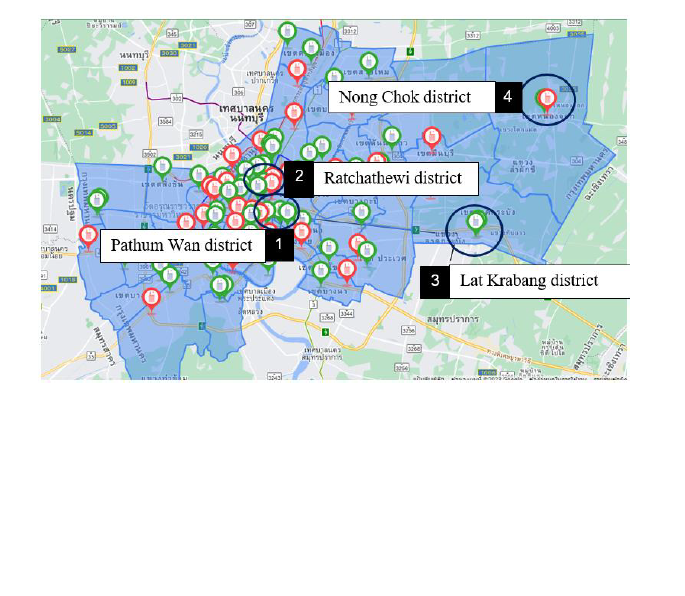Plant-Based Solutions to Air Pollution in Bangkok: The Role of Urban Green Spaces
Keywords:
Urban green space (UGS)Abstract
In recent years, Bangkok has emerged as one of the most affected cities globally by air pollution, with rising levels of particulate matter 2.5 (PM2.5) posing severe threats to human health and the environment. Urban Green Spaces (UGS) have proven to be a powerful tool in mitigating air pollution and other environmental hazards. This research explores how UGS can mitigate this issue by examining the correlation between UGS and PM2.5 levels across urban and suburban districts in Bangkok. PM2.5 concentrations are compared in areas adjacent to roads versus city parks. The methodology includes data collection from secondary sources and analysis using one-way ANOVA, independent-sample T-tests, and the Mann–Kendall test with Sen's slope. The findings reveal a steady increase in UGS across the most studied districts in Bangkok between 2008 and 2022, with notable expansions in the Ratchathewi, Pathumwan, Nong Chok, and Lat Krabang Districts. Regarding PM2.5 concentrations, seasonal variations were observed, with higher PM2.5 levels during the beginning and end of the year. Monitoring stations near roads consistently recorded higher levels, often exceeding the 24-hour standard, while park stations generally maintained lower PM2.5 levels. However, some park stations occasionally exceeded acceptable levels. Comparative analysis showed that PM2.5 concentrations were significantly lower in parks than nearby roads, with reductions ranging from 26% to 43%. This indicates that UGS effectively reduces PM2.5 pollution, emphasizing the importance of incorporating green infrastructure in urban planning. These findings highlight the necessity for sustainable measures and ongoing efforts to manage air pollution, particularly during high-risk periods, to maintain improved air quality in Bangkok.

